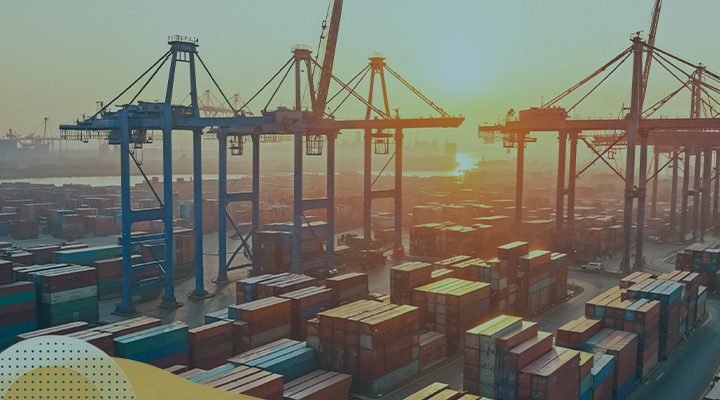In today’s high-stakes global trade environment, logistics is no longer just an operational function. It has become a lever for strategic advantage.
For companies trading internationally, the cost of moving goods isn’t just about freight or fuel—it’s also about timing, compliance, taxes, insurance, inventory, and reputation.
Hidden inefficiencies in logistics can shrink profit margins by up to 9 percentage points and even impact your company’s creditworthiness. In this article, our experts have put together some logistics cost optimization strategies you can adopt to overcome these.
Did You Know: 33% of corporate leaders consider cost management as their highest priority. 86% plan to invest in AI and technology for cost reductions.
The Hidden Costs of Logistics Inefficiencies
Besides the upfront costs of transporting goods across borders, there are many ways in which poorly planned and managed logistics can cost you:
- Transportation and freight: Fuel surcharges, underutilized capacity, and suboptimal routing lead to unplanned increases in costs
- Duties and taxes: Incorrect classification of goods or a failure to use the right licences, schemes, or FTAs can inflate import duties
- Demurrage and detention: Average demurrage charges can be as high as $75–$300 per container per day, especially during congestion periods. Delays in shipping and processing can make these costs add up quickly
- Insurance costs: Long transit times or repeated delays increase exposure and push up insurance premiums by 30% or more
- Inventory carrying costs: Delayed goods lead to overstocking safety inventory or expensive emergency air shipments
- Reputational risks: Missed deliveries weaken customer trust and can reduce future business. Moreover, firms experiencing chronic delays often face downgrades in their payment terms, hurting their negotiating position
Strategies to Optimize Logistics Costs
Logistics leaders today are investing in intelligent orchestration to improve efficiency and agility. They are leveraging data, automation, and real-time decision-making to cut costs without compromising on speed, accuracy, or compliance.
Here are some logistics cost optimization strategies you can also adopt for your business to improve efficiency.
Centralize trade data
Start by unifying data flows across external stakeholders and internal logistics teams. Centralized data and end-to-end visibility are essential to spot delays and cost escalations early.
Intelligent platforms like Trezix offer a unified view across carriers, customs, ports, freight forwarders, brokers, and internal teams. The ability to track shipments and documents in real time reduces uncertainty and lets teams proactively control costs.
Automate classification and compliance
Manual errors in HS code classification or export paperwork can lead to compliance penalties or overpaid duties.
Use AI-based tools to accurately classify goods, validate invoices and documents, and automate compliance documentation across stakeholders.
This reduces your reliance on manual processes and lowers penalty risk.
Trezix Tip: Autonomous AI agents in the Trezix platform automatically classify HS codes based on end-use, ensuring accurate classification.
Build predictive capabilities
Tools powered by AI and ML can forecast port congestion, seasonality, and customs delays. Better forecasting leads to more efficient cost planning and avoids last-minute rerouting or air freight.
For example, in the case of port congestion, Trezix helps firms dynamically reroute, validate documents, and track duties in real-time to mitigate the impact.
Optimize for FTAs and tariff codes
Free trade agreement benefits are frequently underutilized due to the complexity of manual tracking and documentation. However, AI can cross-check product-country combinations in real time to surface duty savings. This can trim landed costs by 5-15%, depending on trade routes.
Trezix helps you explore underutilized FTAs to reduce duties, dynamically mapping eligibility across SKUs.
Reassess Incoterms and trade routes
The ability to proactively assess risk exposure and cost impact gives teams an opportunity to strategically change Incoterms (e.g., FOB vs. DDP). Teams can also analyze shipping lanes and select ports with lower congestion or better customs efficiency.
Platforms like Trezix give you the visibility you need to do this on an ongoing basis.
Did You Know: UK-based logistics teams found their worlds changed dramatically with Brexit. Administrative and logistics costs for EU-UK trade increased by over 30% due to new customs documentation and extended transit times.
Turn Logistics Management Into a Competitive Advantage
In the world of global trade, logistics isn’t back office anymore—it’s a front-line business lever. From CFOs to COOs, smart executives are now treating logistics as a value generator, not a cost center.
Through digital orchestration, real-time visibility, and AI-powered compliance, businesses globally are turning logistics cost optimization into a sustained competitive advantage.
The AI-native Trezix platform ensures real-time compliance, duty optimization, and end-to-end trade intelligence tailored for your region and industry.
Ready to reduce logistics costs, eliminate delays, and take control of your trade operations? Get a demo to learn more.




